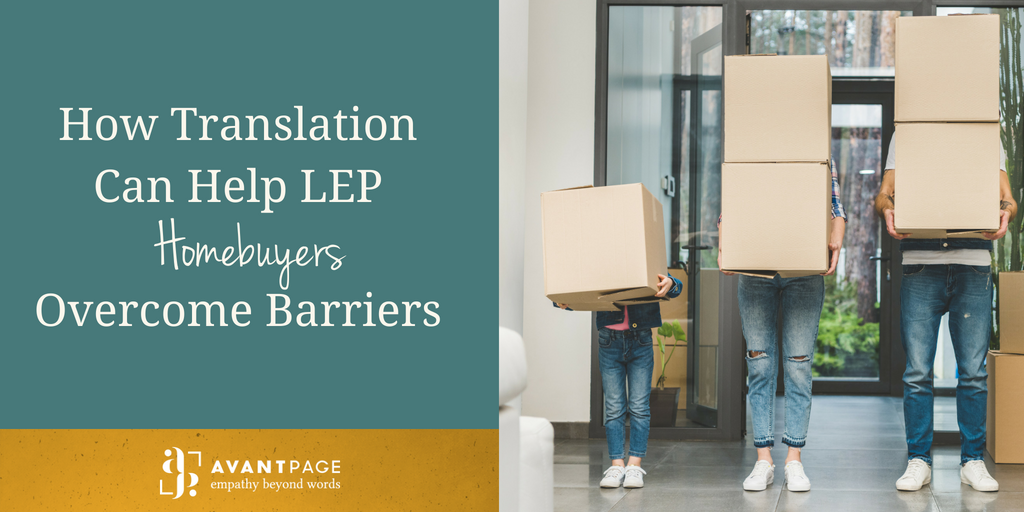LEP homebuyers face increased barriers to homeownership, and many of those barriers are related to language access.
According to a study by the Urban Institute, there is a 5 to 10 percentage-point gap in homeownership rates between neighborhoods with low levels of Limited English Proficient residents and those with higher levels of LEP residents. The Urban Institute studied data at the zip code level from the Urban Institute and Sloan Foundation’s Administrative Data Research Facility and found that neighborhoods with the lowest concentration of LEP residents had a median homeownership rate of 74 percent in 2016. However, communities with the highest LEP concentration had only a 64 percent median rate—a 10 percentage-point difference. Even when other factors such as income, age, and race are considered and controlled, neighborhoods with the highest concentrations of LEP residents still have homeownership rates 5 percentage points lower than rates in neighborhoods with the median concentration of LEP residents.
LEP Homebuyers and Access To Financing
This may be because of how vital language access is to be obtaining a mortgage. In a 2017 study conducted by Fannie Mae and Freddie Mac, an independent firm researched the attitudes and experiences of LEP homebuyers. The researchers talked with Chinese (Mandarin), Korean, Spanish, Tagalog, and Vietnamese LEP homebuyers in New York, Maryland, and Texas. Overall, the study found that LEP homebuyers in all those locations and languages want easily accessible translated documents as they navigate the home buying process. The LEP homebuyers surveyed reported a range of potential benefits when using in-language documents. According to the study, these translated documents can:
- Make the process more efficient for LEP homebuyers;
- Provide LEP homebuyers with a way of not having to rely so heavily on others
- Give LEP homebuyers confidence that they fully understand their obligations
- Reduce cognitive burden because LEP homebuyers have a document and not just a memory on which to rely
- Signify that LEP homebuyers are “welcome” to participate in the American dream of homeownership. The documents symbolize that the culture wants to include, and not exclude, them.
LEP Homebuyers and Translation
While LEP homebuyers said they would value translated documents, they also had several concerns about poorly translated documents. In the worst of cases, these mistranslated documents can decrease trust and increase cultural tensions. As a result, translations for LEP homebuyers must be rigorously tested to ensure they work for the intended audience and purpose. Translations must include an active and in-depth interpretation of the concepts and cultural expectations to achieve true understanding. They must also be viewed through the lens of LEP homebuyers who are unfamiliar with the process.
When you work with a professional language services provider, such as Avantpage, you can be sure that a team of language experts is working together to translate your documents for LEP homebuyers in a clear way. For more information on how to support LEP homebuyers through translation, call us today at (530) 750-2040, or request a free quote.
GET VALUABLE CONTENT DELIVERED STRAIGHT TO YOUR INBOX. SIGN UP FOR OUR NEWSLETTER TODAY!
